The Shell Paintings of Adrienne Coorte Revealing the timeless in the humblest subject
If you look at enough art, sooner or later you start to see them.
Not the famous names that everybody knows, or the blockbuster exhibits with lines of people out the door and around the corner waiting to get in.
Not the pantheon of Important Great Artists, but the quieter voices – the small paintings tucked away in the museum corners and names mentioned in footnotes.
Artists who – despite their obvious and sometimes overwhelming talent – seem to exist in the shadow lands outside the bright lights in the art world.
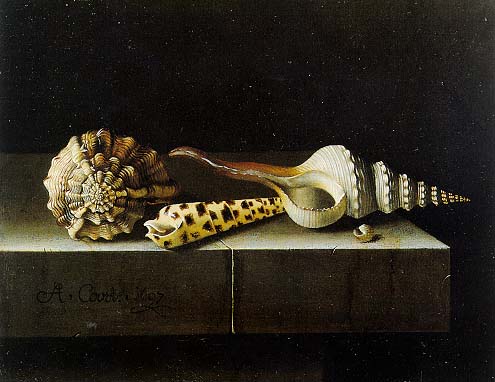
“Still Life with Shells”
Oil on paper on panel, 7×9 inches, 1697.
One of my favorites of these is Adrienne Coorte, a painter of the Dutch Golden Age who specialized in still life.
Like most of these obscure figures, not much is known about Coorte’s life.
He was born around 1665 in the city of Middelburg in the Dutch Republic, and received his training in Amsterdam, after which he returned to his home town.
One of the few facts that is definitively known about his life is that he was fined for selling paintings without being a member of the Guild of St. Luke (a union which strictly controlled nearly every aspect of the art trade).
This suggests something of the rebel about him – maybe even the entrepreneur – and I find it tremendously endearing.
After his death in 1707 around age 42, he slipped into complete obscurity, and was almost completely unknown until his rediscovery in the 1950s.
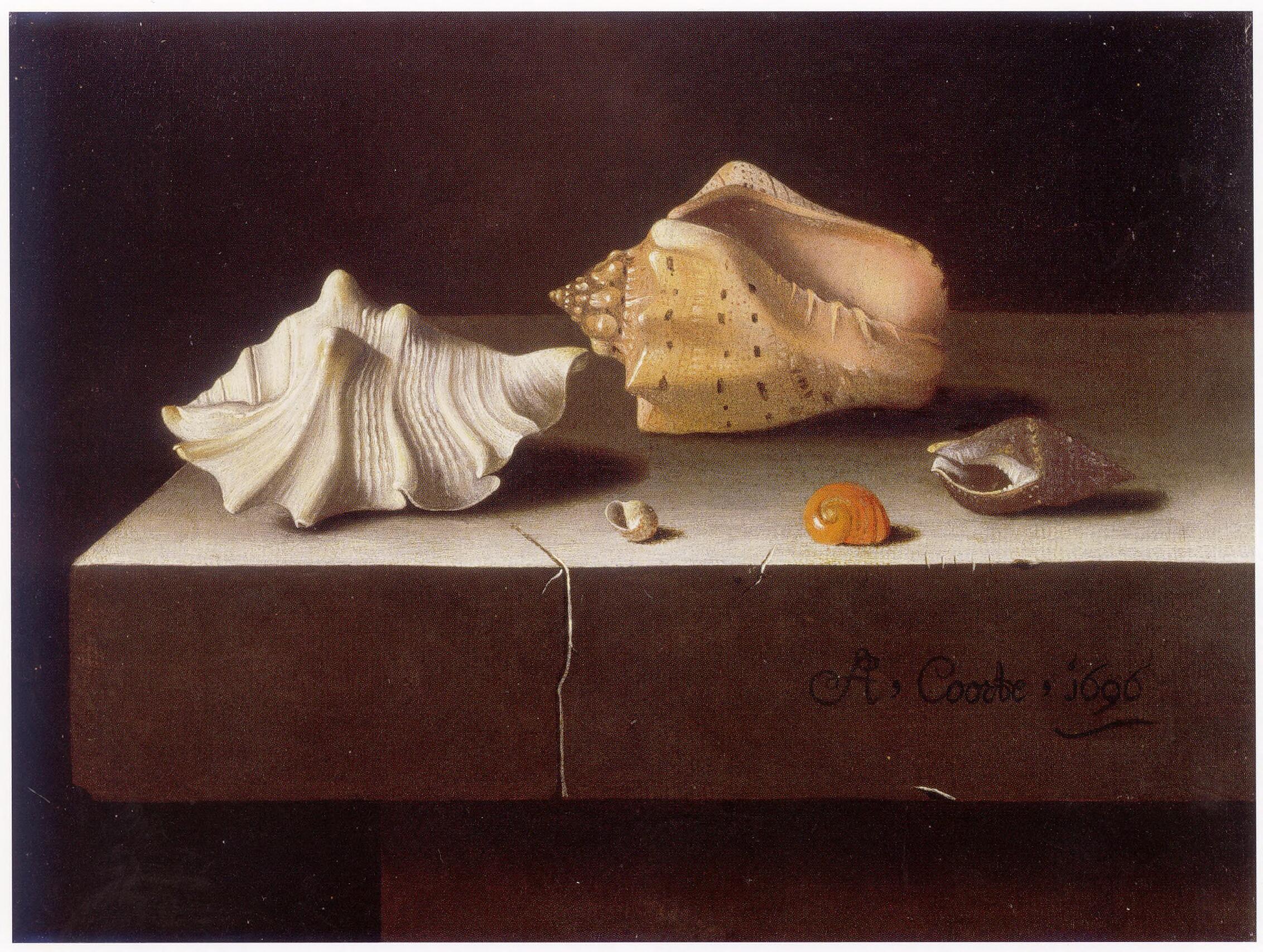
“Two Large and Three Small Shells on a Slab of Stone”
Oil on paper on panel, 6×9 inches, 1696
Much like Vermeer who lived several generations before, Coorte’s output is small – perhaps 60 to 70 paintings.
For the most part, he avoided lavish, grandiose compositions, and instead focused on simple, restrained depictions of fruit, pottery, even insects, meticulously and precisely arranged, with exquisitely observed effects of light and shadow.
To me, though, the real heart and soul of his work are his shell paintings.
This is a series of about half a dozen works depicting groups of seashells – all small (about the size of the average book), and treated with simple, almost monochromatic, color.
These are not filled with the pleasures other still life paintings have to offer – the rich colors, luxurious textures, brilliant surfaces, and intense highlights, reflections, and plays of light one might find in the work of Willem Kalf, Pieter Claesz, Luis Melendez, and so forth.
None of that.
They are not even as not even as refined as the very similar shell paintings of Balthasar van der Ast.
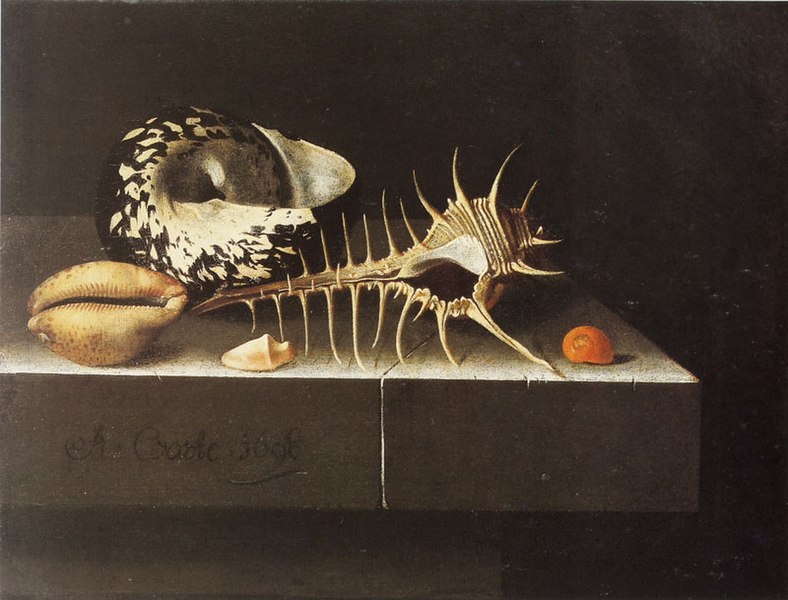
“Shells”
oil on panel, 6×9 inches, 1698
Instead they reveal a spare, concentrated, maybe even strict world – nothing more than a handful of shells arrayed on a plain stone shelf, with dim, cold light flowing across the scene – meditations on fragility and ephemeral Nature.
Unquestionably beautiful, they also seem like skeletal, alien beasts – foreboding and even vaguely threatening, almost like Salvador Dali creatures with impossibly long appendages striding across a hostile landscape.
One can even sense an intense loneliness in these solitary figures, even when huddled together into larger masses.
It is not a bright, friendly, or engaging world.
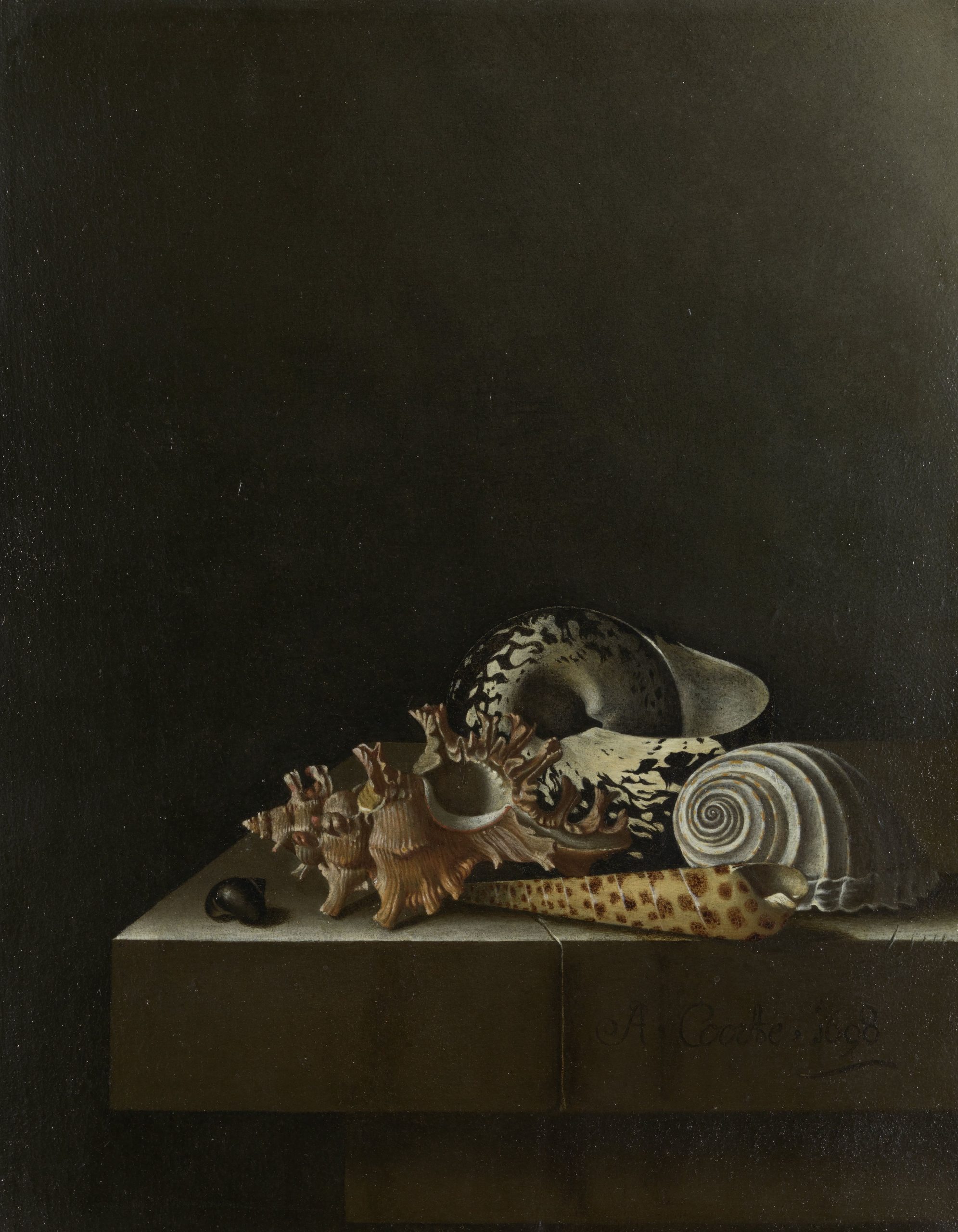
“Still Life with Shells”
Oil on paper on panel, 11×9 inches, 1698.
Yet, here beats the true heart of still life painting, and in the most rarified and pure form imaginable.
Everything extraneous has been removed.
All thoughts about his craft and art have been endlessly sifted and cleansed, until nothing frivolous remains.
Just a fanatical attention to the exactness of form and space, and the precision of light and shadow.
By obsessively exploring the simplest and sparest compositions, each element sits in precisely the right place, creating a vibrant harmony with all the others – one can easily imagine him spending hours on end to get the placement of each shell “just so”.
Although a fine colorist, with these paintings even that element of the craft is made subservient to his greater goal – in his cool, clinical light, only a minimum of color is needed to express his ideals.
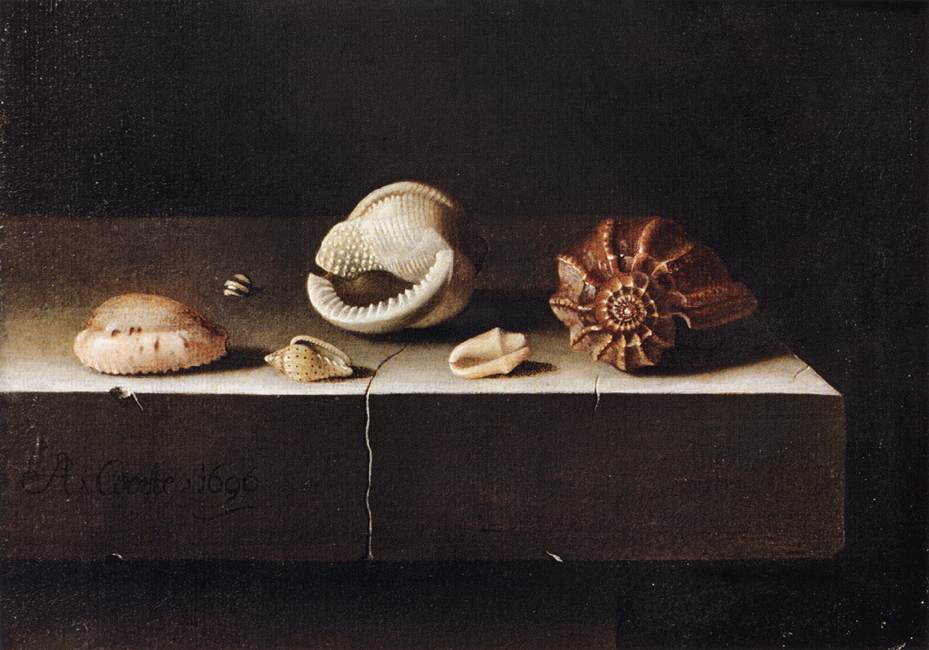
“Two Large and Four Smaller Shells on a Slab of Stone”
Oil on paper on panel, 6×9 inches, 1696
When seen through Coorte’s unflinchingly honest eyes, these simple, trivial things are raised to the sublime.
In fact, I see in him a kindred spirit with Vermeer – not a painter of the great and the grandiose, but of the quiet and the intimate. Not the grand sweep of history, but the simple humble stuff of daily life, elevated to truly profound poetry – like the alchemist transmuting base metals into pure gold.
Standing before one of Coorte’s otherworldly masterpieces, time can truly stand still.
If we listen to his gentle whispers, we enter the realm of the timeless.
Here, the very small can become incomprehensibly vast, the ephemeral becomes Eternal, and we can catch just a glimpse of the Beyond.